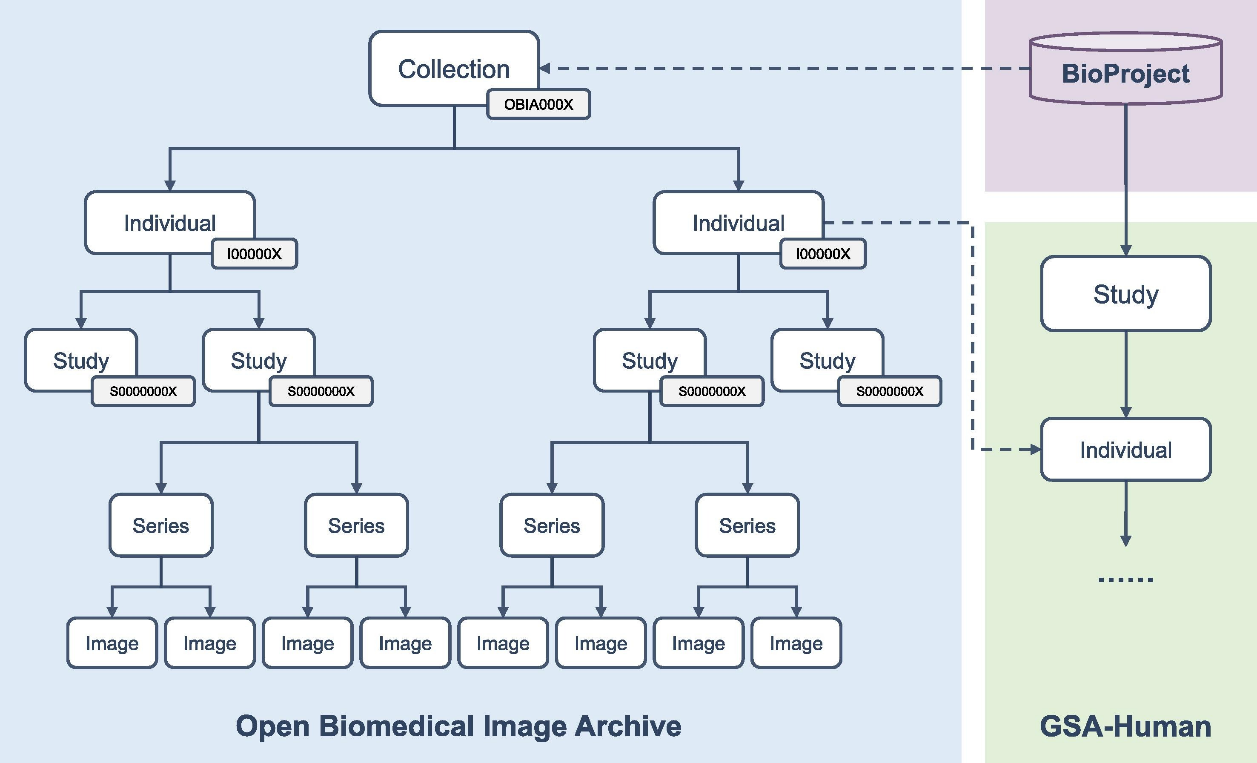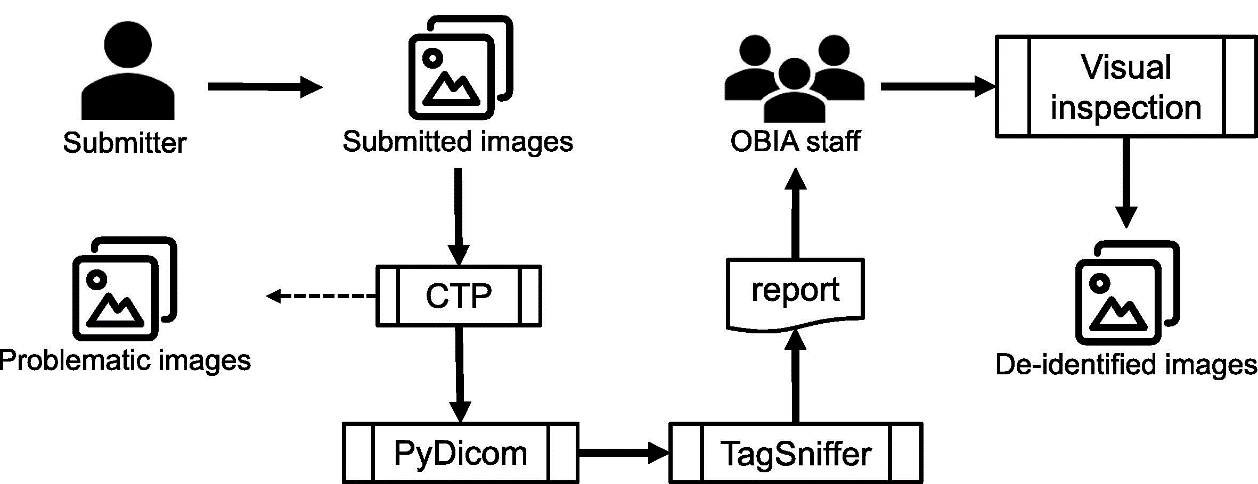OBIA: Open Biomedical Imaging Archive
Biomedical imaging plays a crucial role in both scientific research and clinical applications. Biomedical imaging data contains a wealth of sensitive information, creating a biomedical imaging data management platform to ensure data privacy while promoting global data sharing is an urgent issue in this field. Currently, several countries, including the United States and the United Kingdom, have established biomedical imaging archives for specific diseases or anatomical regions to promote data sharing. However, China is currently in the early development in this field and lacks a public biomedical imaging data service platform.
Recently, researchers from the National Genomics Data Center, Beijing Institute of Genomics of Chinese Academy of Sciences (China National Center for Bioinformation) and the Department of Obstetrics and Gynecology, Chinese PLA General Hospital have jointly developed the Open Biomedical Imaging Archive (OBIA). This work was published online in Genomics Proteomics & Bioinformatics with the title "OBIA: An Open Biomedical Imaging Archive."
OBIA is a centralized repository of de-identified biomedical imaging data. OBIA adopts five data objects (Collection, Individual, Study, Series, and Image) for data organization, and it seamlessly integrated with BioProject and GSA-Human, facilitating the harmonious integration of imaging and genomic data to support multi-omics analysis. In order to protect personal privacy, OBIA has formulated a unified de-identification and quality control process and offers two different types of data access policies: open access and controlled access. In addition, OBIA provides friendly and intuitive web interface for data submission, browsing and retrieval, as well as image retrieval.
As of September 2023, OBIA has housed a total of 937 individuals, 4,136 studies, 24,701 series, and 1,938,309 images, covering 9 modalities and 30 anatomical sites. Representative imaging modalities are computed tomography (CT), magnetic resonance (MR), and digital radiography (DX). Anatomical sites include abdomen, breast, chest, head, liver, and pelvis. The data of these 3 collections submitted to OBIA came from the Chinese People’s Liberation Army (PLA) General Hospital, including imaging data of three major gynecological tumors: endometrial cancer, ovarian cancer, and cervical cancer. In addition, we collected associated clinical metadata, such as demographic data, medical history, family history, diagnosis, pathological types, and treatment methods. In summary, OBIA provides a reliable platform for biomedical imaging data management and offers free open access to all publicly available data to support research activities throughout the world.

OBIA data model

OBIA de-identification and quality control mechanism
Contact:
Prof. ZHAO Wenming
Email: zhaowm@big.ac.cn